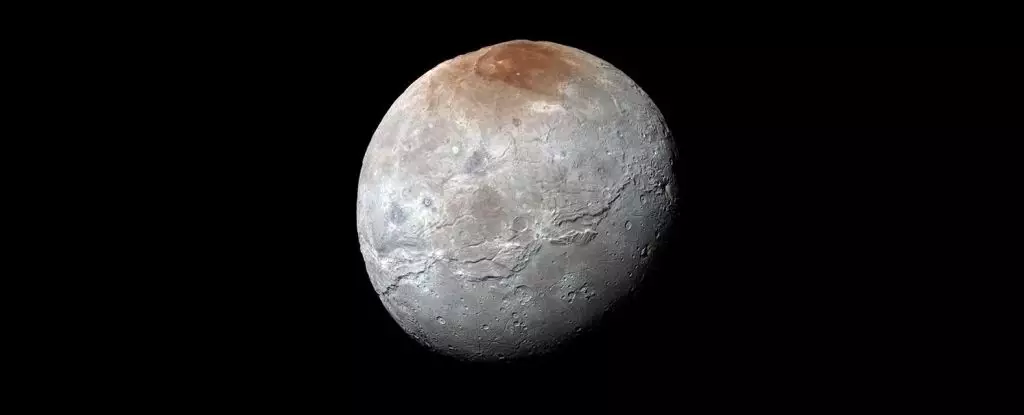The story of Pluto and its companion Charon is a captivating narrative of celestial interactions, one that illustrates the complex dynamics of the universe. Recent research has challenged the long-standing views on how these two bodies came to exist in their current orbital relationship, proposing a novel “kiss and capture” mechanism. This new understanding not only highlights the intricate nature of planetary formation but also emphasizes the significance of material properties in celestial collisions.
At the heart of the study is the claim that Pluto and Charon likely formed through an initial collision that resulted in them briefly merging before ultimately separating while remaining gravitationally bound. This contradicts the previously accepted theories, which posited that Charon was formed from a massive impact, akin to the process that created Earth’s Moon. Scientists have typically categorized planetary collisions within simplistic models of “hit and run” or “graze and merge.” The team behind this groundbreaking research, led by planetary scientist Adeene Denton at the University of Arizona, introduces an entirely new paradigm that is characterized by a more complicated dance between these two celestial bodies.
One of the primary distinctions between the dynamics of Pluto and Charon’s formation and that of Earth and its Moon lies in the material composition and environmental conditions. Earth and its Moon, formed about 4.5 billion years ago, are composed largely of warmer materials that behave more like fluids during collisions. This fluid-like behavior results in dramatic interactions that can lead to significant reconfiguration of the colliding bodies.
Contrastingly, the frigid conditions in the outer solar system mean that Pluto and Charon, comprised of rock and ice, exhibit entirely different physical properties. Their smaller sizes—2,376 kilometers for Pluto and 1,214 kilometers for Charon—contribute to their distinctive outcomes in a collision scenario. The research suggests that rather than a violent merging that generates debris, Pluto and Charon’s encounter would be more restrained, resulting in a temporary connection without catastrophic transformation.
In the study, the researchers employed simulations to replicate the orbital dynamics of Pluto and Charon, leading to the discovery that this “kiss and capture” scenario can account for the way these bodies interact today. Unlike the destructive environments typically associated with larger bodies in warmer conditions, these models illustrate a more stable and enduring relationship. The resulting simulations align perfectly with the current orbital properties observed, further emphasizing the robustness of this newer model.
The researchers also drew parallels to the contact binary known as Arrokoth, comprised of two lobes that illustrate how bodies can remain relatively intact despite their encounter. This resemblance suggests that not only are Pluto and Charon more resilient than previously believed, but also that their formation scenarios may share vital similarities with other distant celestial bodies, thereby enriching our understanding of the early solar system.
The implications of this study extend far beyond the specifics of Pluto and Charon. As we unravel the complexities of their formation, we glean insights into how planetary bodies might form and evolve in diverse conditions across the universe. The “kiss and capture” model opens new avenues for research, urging scientists to reconsider fundamental assumptions about planetary interactions.
Furthermore, understanding the initial formation configuration of Pluto and Charon allows researchers to delve into how these interactions could shape geological evolution over time. As Denton eloquently points out, recognizing how initial conditions impact geological processes can lead us to a deeper comprehension of the universe’s formative events.
Ultimately, this research prescription invites us to appreciate the plurality of formation mechanisms that govern the celestial bodies in our solar system and beyond. By acknowledging the physical properties of materials involved in these ancient cosmic events, we shift our perspective on planetary evolution, potentially redefining how we view the intricate web of relationships that bind celestial objects.
The Pluto-Charon narrative offers a rich tapestry woven from the collisions and interactions that define our universe. With each revelation, we come a step closer to understanding not just our solar system, but the countless celestial systems that populate our cosmos. Pluto and Charon may be small by cosmic standards, yet their story is monumental, illuminating the vast complexities of planetary formation and evolution.


Leave a Reply